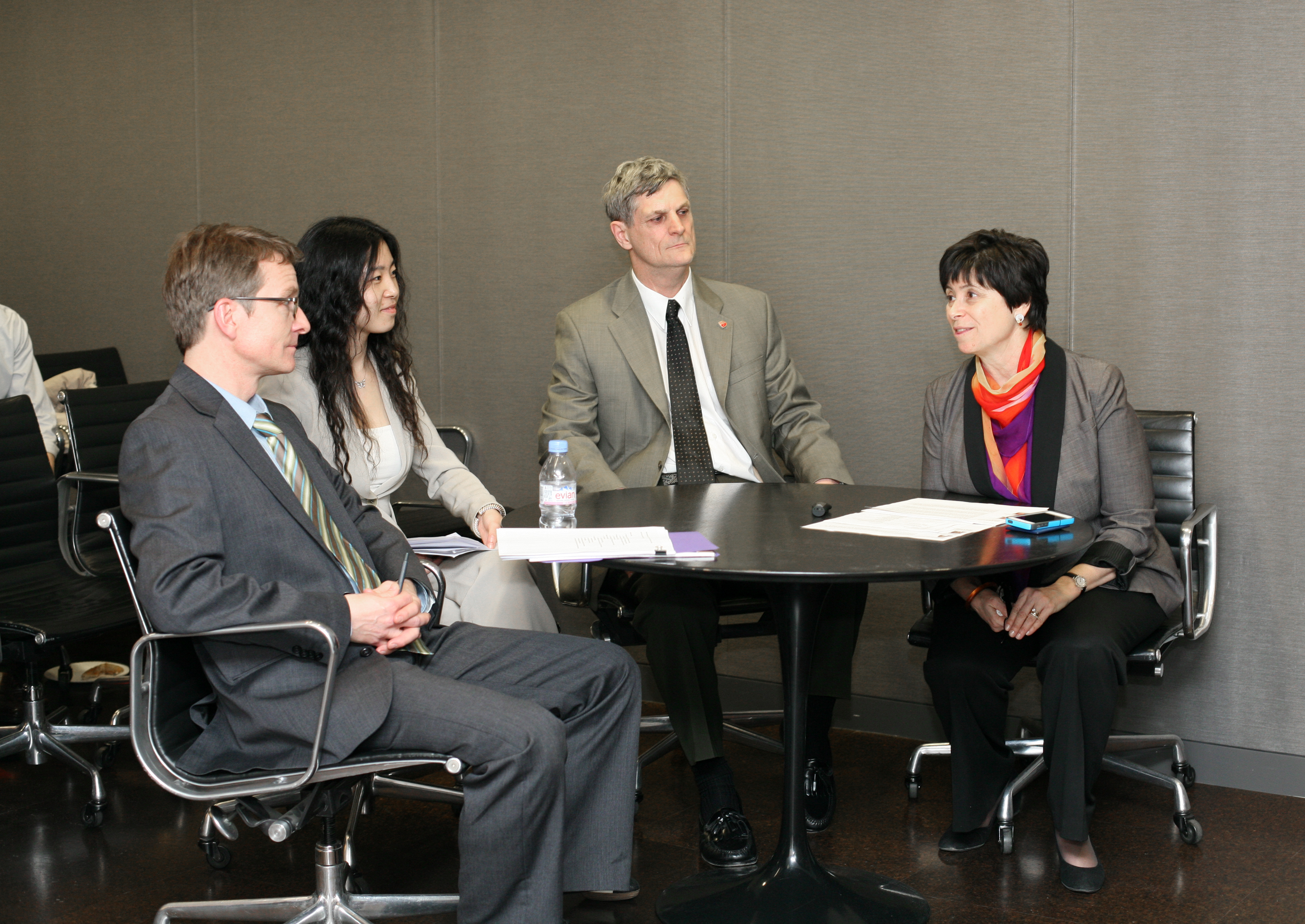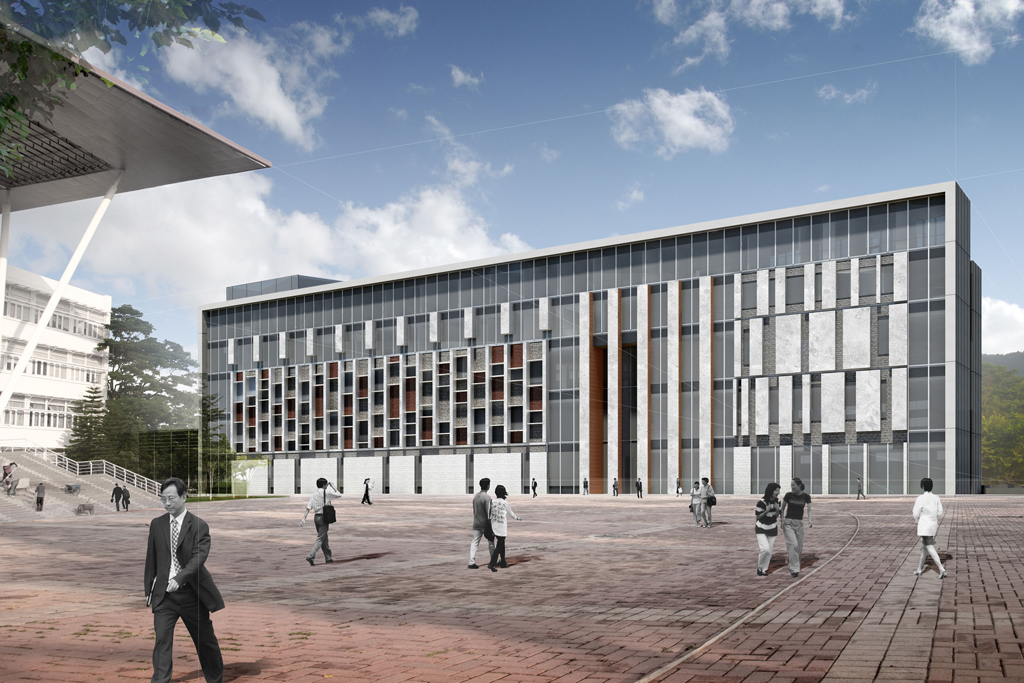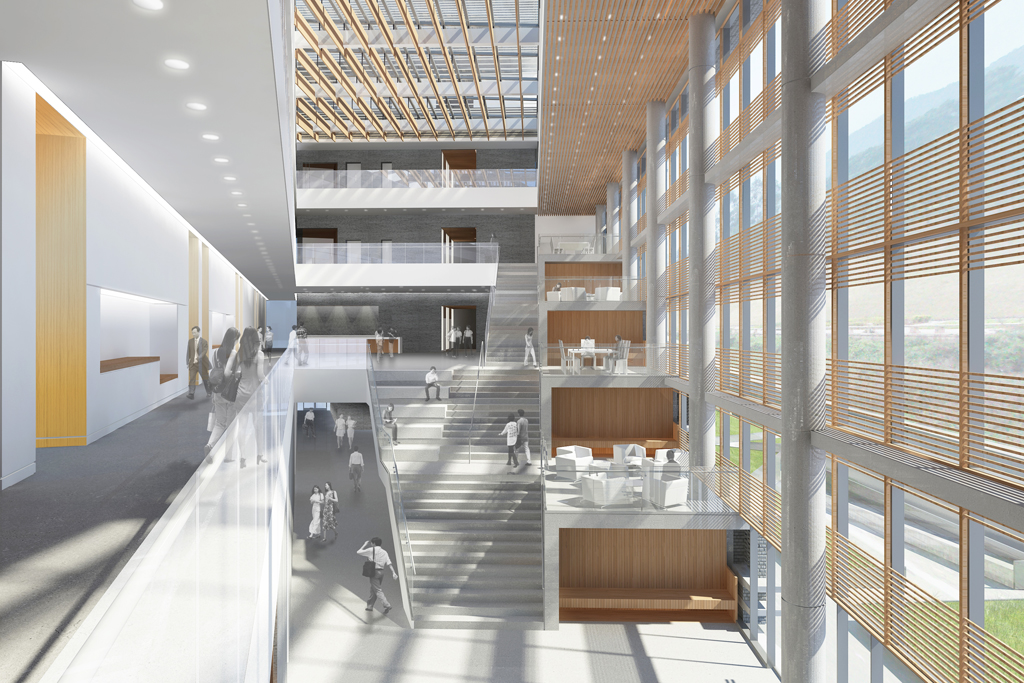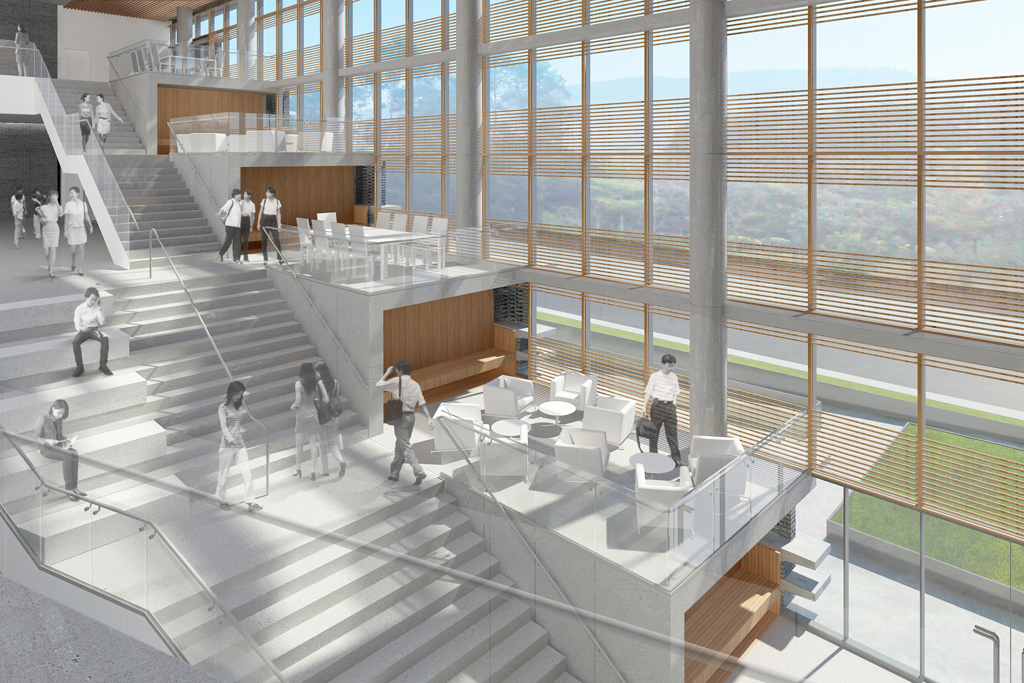by: Bill Millard
New York University’s expansion on a global scale, with major portal sites NYU Abu Dhabi and NYU Shanghai as well as here (officially “NYU in New York”), plus 10 other centers worldwide, has been a source of campus one-liners about “the real estate developer that offers classes on the side,” or the chance to study at NYU Moon in 2031.
But for all its high-visibility internationalism, NYU isn’t alone in this endeavor. Major universities have been forming increasing numbers of partnerships with overseas academic institutions in recent years. The concept of the geographically unified academic campus is evolving into new forms, including networks of far-flung campuses, campuses that host multiple institutions, and even universities that have no physical campus at all.
At a three-way videoconference hosted locally at Kohn Pedersen Fox’s midtown headquarters, speakers situated physically in Seoul, Singapore, and New York – but located conceptually in a future that’s achievable and tangible, not science fiction – discussed a range of these projects, concentrated in East Asia.
Each new partnership requires appropriate facilities to serve its distinctive student base and put its priorities into action; these do not always take the form of original architecture, but in some cases the architectural solutions are the center of attention.
For NYU Shanghai, reported NYU Design Director Mark Gordon, retrofitting an existing office building into a new vertical campus is the strategy of choice for the school’s architects in KPF’s New York and Shanghai offices, holding all functions from classrooms and faculty offices to dining within one structure. As in other vertical-campus models at urban sites, this building needs to address chronic practical concerns like frequent class changes on a bell schedule, a circulation challenge that is better served by a prominent central double staircase than by heavy reliance on elevators. This space (“the beacon”) also serves as a light well to bring ample natural light into spaces that students will be occupying all day; a 350-seat auditorium, sculpted to resemble a shell or egg, is also light-filled during the day, as is an upper multipurpose collaborative space with a striking view of Shanghai’s fast-growing Pudong district.
Another ambitious institution with a strong architectural embodiment is Peking University’s School of Transnational Law (STL), located on the university’s Shenzhen satellite campus and represented on the New York panel by Assistant Dean Jasmine Hua Xu. Founded in 2008 as the first professional school to grant combined American and Chinese law degrees, answering the need of China’s rapidly advancing economy for practitioners of international law, STL is constructing a striking new headquarters on a wedge-shaped site. Expressing the idea that “a good lawyer should possess the ability to see things from two different perspectives,” in Dr. Xu’s words, the two-part building presents sharply contrasting façades, with the south side facing the Dashahe River bank marked by strong horizontals and extensive glazing (signifying the openness and transparency of the law), while the north face features high columns and other verticals (emphasizing the dignity of law and justice).
KPF Principal and 2013 AIANY President Jill N. Lerner, FAIA, and her team have given STL a building well-suited to a bilingual atmosphere, a demanding curriculum based on the Socratic dialogic method, and a renowned faculty recruited from around the world.
The National University of Singapore (NUS) and the Kyung Hee Cyber University (“the most spacious place in Korea,” as described by its Vice President Byong Jin Ahn) emphasize virtual learning environments. Their built spaces call for modular flexibility, attention to students’ mobility and ergonomics, mobile furniture, and a general awareness that today’s students, “a new breed of learners” in the words of NUS planner Roy Tan, often take the lead in directing institutions to provide what they want. Alongside the controversial University of Phoenix paradigm for large-scale distributed academic enterprises and the Amazon example – treating cyberspace as little more than a store – Ahn stressed that a contemporary techno-university needs an equally compelling model of education in service to the res publica (more in tune with Erasmus and contemporary academic theorists like Harvard President Drew Gilpin Faust, who see 21st-century universities as nothing less than models for a more civilized world).
SUNY Stony Brook’s Brent Lindquist, whose institution is partnering with Korea’s Songdo Global University at a 10-university, 10,000-student campus in the Incheon Free Economic Zone, pointed out how such enterprises (with purposeful buildings like the circular “UniverCity”) can recreate the classical agora, provided their leaders can negotiate lengthy and complex processes of planning, funding, and acculturation.
As Asian cities develop ties with high-profile Western liberal-arts institutions like Yale (with NUS, putting its name on an external entity for the first time in 300 years, noted Yale-NUS Project Director Diane Abbott), and Duke (which established a partnership last year in Kunshan, 20 minutes from Shanghai by high-speed rail), the strongest outcomes are likely to occur when the most progressive values of each partner and each culture drive both the architectural and pedagogic planning.
Shanghai’s Tongji University, which dates to 1907, offers a salient example: its leaders, reported Prof. Wang Yan speaking on the Seoul panel, have decided on sustainability-oriented planning as a guiding principle, earning recognition in a 2009 Nature article on world-leading green campuses. Participants from each site acknowledged, amid the enthusiastic and idealistic expressions that often characterize academic futurist events, that international partnerships face recurrent obstacles: ensuring academic freedom regardless of governmental policies; helping migrating students and faculty acclimate to novel academic, political, and cultural milieus; and reconciling the interests of the different partners.
Architects represent only one of many fields of expertise brought to bear as these partnerships expand. Still, it is precisely the global collaborative nature of architects’ experience that makes their involvement indispensable.
Bill Millard is a freelance writer and editor whose work has appeared in Oculus, Icon, Content, The Architect’s Newspaper, and other publications.












